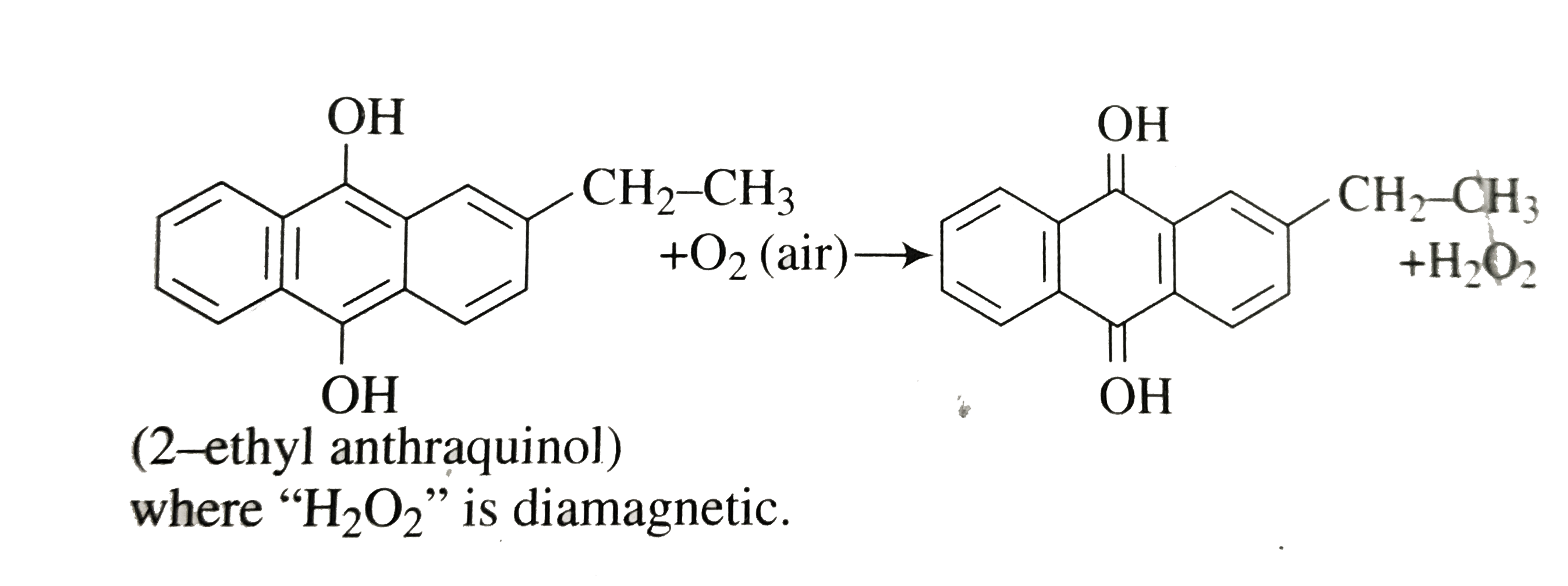The pair(s) of reagents that yield paramagnetic species is/are
A
and excuss of
B
and excess of
C
and dilute
D
and 2-ethylanthraquinol
Video Solution
Text Solution
The correct Answer is:A, B, C
Dilute solution of in liquid ammonia is paramagnetic due to ammoniated
is paramagnetic due to unpaired electron in antibonding orbital
is paramagnetic due to unpaired electrons on .

|
Topper's Solved these Questions
- APPENDIX - INORGANIC VOLUME 1BOOK - CENGAGE CHEMISTRY ENGLISHCHAPTER - APPENDIX - INORGANIC VOLUME 1EXERCISE - chapter-5 Single correct answer
1 Videos
- APPENDIX - INORGANIC VOLUME 1BOOK - CENGAGE CHEMISTRY ENGLISHCHAPTER - APPENDIX - INORGANIC VOLUME 1EXERCISE - chapter-6 Multiple correct answer
1 Videos
- APPENDIX - INORGANIC VOLUME 1BOOK - CENGAGE CHEMISTRY ENGLISHCHAPTER - APPENDIX - INORGANIC VOLUME 1EXERCISE - chapter-3 Single correct answer
1 Videos
- ALKYNESBOOK - CENGAGE CHEMISTRY ENGLISHCHAPTER - ALKYNESEXERCISE - Exercises (Archives - Analytical and Desriptive Type)
4 Videos
- ATOMIC STRUCTUREBOOK - CENGAGE CHEMISTRY ENGLISHCHAPTER - ATOMIC STRUCTUREEXERCISE - Concept Applicationexercise(4.3)
19 Videos
Similar Questions
The paramagnetic species is
View SolutionThe paramagnetic species is
View SolutionAmong the following, the paramagnetic species is:
View SolutionThe species which is paramagnetic
View SolutionThe species which is paramagnetic
View SolutionTrick to find paramagnetic and Diamagnetic species
View SolutionWhich of the following pair(s) represent(s) the isoelectronic species ?
View SolutionThe pair of species having paramagnetic nature and same bond order is
View SolutionAssertion :- All diamagnetic species are colourless
Reason :- All paramagnetic species are colourful.
View SolutionFind to trick paramagnetic and diamagnetic species
View Solution
